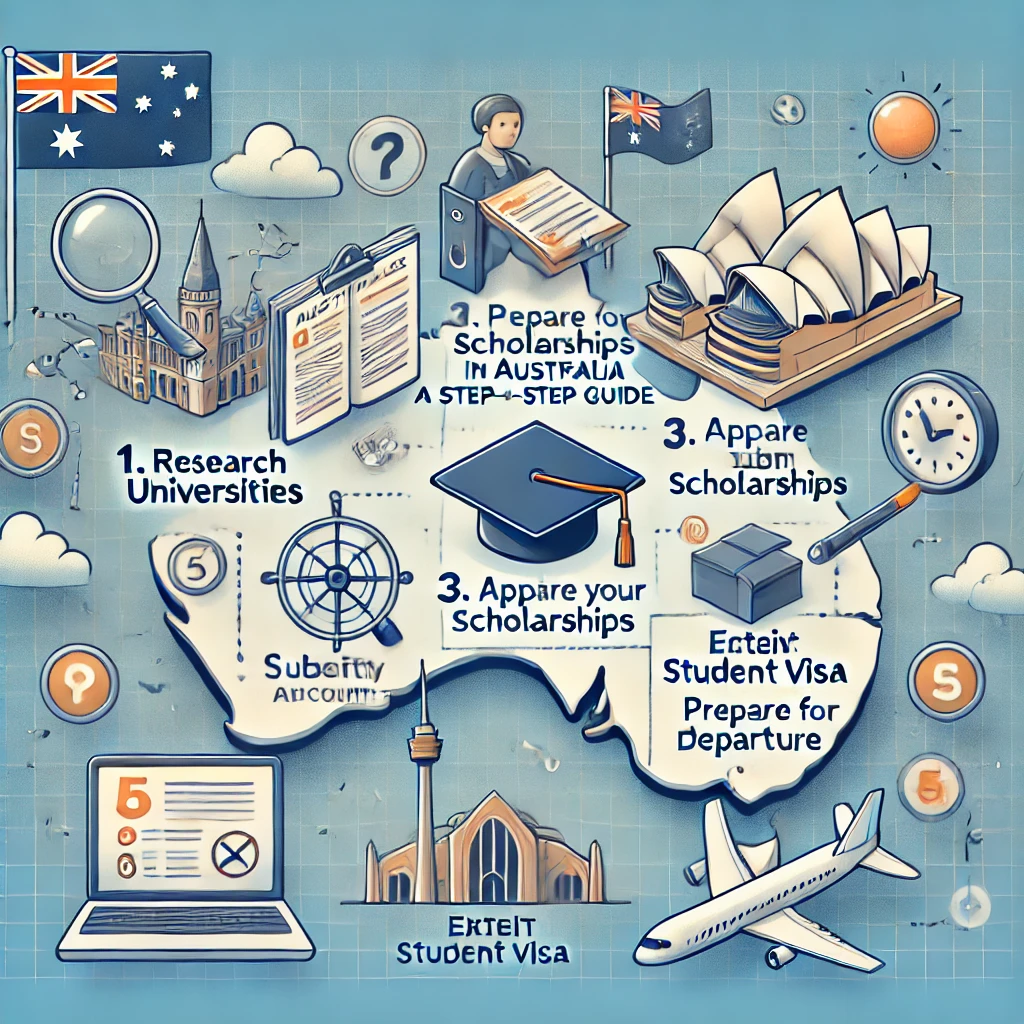How to Study for an MS in Australia: A Step-by-Step Guide
Australia has become a top destination for international students, thanks to its world-class universities, diverse cultural environment, and high standard of living. If you are planning to pursue a Master’s in Australia, here’s a step-by-step guide to help you navigate through the process.
1. Research and Choose the Right Course and University
The first step is selecting the right MS course and university. Australia offers a wide range of specializations, so identify your academic interests and career goals. The Australian Qualifications Framework (AQF) allows you to compare the different study options across universities. Some of the top Australian universities offering MS programs include, University of Melbourne Australian National University (ANU), University of Sydney, University of Queensland
Pro Tip:
Use university ranking sites and connect with alumni or student communities to gather insights about courses and faculty.
2. Check admission requirements.
Once you have shortlisted the universities, review the admission requirements. Each university and course may have specific criteria, but generally, you’ll need: A bachelor’s degree (preferably in a relevant field) A competitive GPA—English proficiency test scores like IELTS or TOEFL (most universities require a minimum IELTS score of 6.5). – GMAT or GRE scores, depending on the course; Letters of Recommendation (LORs) Statement of Purpose (SOP) Make sure you meet these requirements before proceeding with your application.
3. Prepare for English Language Tests.
To study in Australia, international students must demonstrate proficiency in English. Most universities accept IELTS, TOEFL, or PTE scores. It’s crucial to prepare well for these tests, as a good score improves your chances of admission and scholarship opportunities.
Tip:
Practice with online tests and consider enrolling in prep courses to achieve the required score.
4. Submit applications to universities.
After meeting the eligibility requirements, the next step is to apply to your chosen universities. Australian universities usually allow you to apply directly through their websites or through registered education agents. Ensure that your application includes academic transcripts. English language test scores Statement of Purpose (SOP) Letters of Recommendation (LORs)—Resume (if required) Keep track of application deadlines and submit everything well in advance.
5. Apply for scholarships.
Australia offers a variety of scholarships for international students. Some well-known scholarships include Australia Awards Scholarships Research Training Program (RTP) Scholarships: university-specific scholarships (e.g., Melbourne Research Scholarships, ANU Chancellor’s Scholarships) Research the available options and apply to those you are eligible for. Securing a scholarship can significantly reduce your financial burden.
6. Receive and Accept Your Offer
Once you’ve applied, it’s time to wait for the admission results. If accepted, you will receive an offer letter from the university, which will either be conditional or unconditional. Once you meet any conditional requirements, you can accept the offer by following the instructions provided by the university.
7. Apply for an Australian Student Visa
After accepting the university offer, the next step is to apply for a student visa (Subclass 500). You will need confirmation of enrollment (CoE) from the university. Valid passport Proof of funds to cover tuition, living expenses, travel, Health insurance (Overseas Student Health Cover—OSHC) – English proficiency scores GTE (Genuine Temporary Entrant) statement Submit your visa application online through the Australian Department of Home Affairs website.
8. Prepare for Your Move
Once your visa is approved, you can begin preparations to move to Australia. Arrange accommodation, book your flight, and pack essentials. Make sure you have health insurance in place and that all documents are in order for your arrival.
9. Attend orientation and begin your journey.
Once you arrive in Australia, attend the orientation sessions at your university to familiarize yourself with the campus, academic procedures, and support services available to international students. This will also be a great opportunity to meet fellow students and make friends.
Conclusion
Studying for an MS in Australia is a rewarding experience that opens doors to global career opportunities. By following these steps, you can ensure a smooth transition to student life in one of the most sought-after educational destinations. Plan ahead, prepare diligently, and you’ll be well on your way to success!

